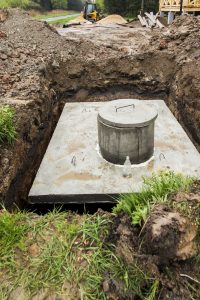As you walk out of your house, you are greeted by a particularly powerful and unmistakable odor. It’s the smell of raw sewage. You’re really hoping that the smell isn’t coming from your cesspool, but as you walk toward the drain field, you find yourself splashing through a puddle of muddy water. While you wish that it weren’t true, you’re experiencing the worst nightmare of all homeowners: an overflowing cesspool.
While you might be tempted to walk away and hope that the problem will just disappear on its own, if you don’t act quickly, it’s only going to get worse. As you dial a cesspool company to have your tank pumped and inspected, you find yourself wondering what could have caused the overflow in the first place.
Septic tanks are designed to hold wastewater that is flushed down the toilets and drains of your home. While these systems are designed to be tough, like anything else, they are prone to damage, and damage can cause an overflow.
Here’s a look at some of the most common reasons why septic systems fail and overflow.
Imbalanced Bacteria
Natural and healthy bacterium is an important component of a septic tank. It breaks down the waste, which helps to prevent clogs that lead to overflows. However, the bacteria level can be disrupted, and when that happens, the result could be an overflow.
Like many homeowners, you might not be aware that you are flushing things down your toilets and drains that are disturbing the bacteria in your septic tank. Some examples of materials that can cause a bacteria imbalance include:
- Chlorine
- Bleach
- Disinfectants
- Harsh detergents
- Powdered detergents
- Household cleaners
If used in small quantities, these items probably won’t do any damage; however, if they are used excessively, the healthy bacteria in your septic tank could be killed off, which will prevent the waste from breaking down and increase the risk of an overflow.
Flushing Hazardous Materials
Septic tanks are designed to process biodegradable waste. The bacteria in the tank can’t break down inorganic materials, so flushing them down your toilets or drains could lead to an overflow in the future.
Some examples of items that should never be allowed to enter a septic tank include:
- Diapers
- Wipes
- Cigarette butts
- Women’s sanitary products
- Coffee grounds
- Cotton swabs
- Grease
- Oil
There are a lot of items that should never be flushed into a septic tank. A good rule to follow is this: if you aren’t able to eat it, you wouldn’t eat it, or you didn’t eat it, it shouldn’t go into the tank.
Excessive Water use
Using more water than your septic tank can accommodate will certainly cause an overflow. Septic tanks are designed to hold a certain amount and once they reach their capacity level, the waste and wastewater has nowhere to go but out. If you are using more water than usual, if you are using several appliances and fixtures that require drainage, or you are doing a high volume of laundry over a short period of time, the chances of a septic tank overflow are very high. Additionally, if water from stormwater runs over your system, you are inviting an overflow.

Damage to Pipes
Septic systems contain a series of pipes that allow waste to pass out of your home an into the tank. If the pipes are damaged in any way, waste won’t be able to pass through them properly. Moreover, cracks or fractures in a pipe could allow groundwater to enter the system and collect in the tank, causing the septic tank to reach its capacity much quicker than it should.
A Poor Design
It goes without saying that if a septic system is going to function properly, it has to be designed properly. Unfortunately, poorly designed septic systems are not uncommon. A cesspool installation company may have laid the pipes incorrectly, or the pipes might not be connected the right way. If the system is poorly designed, waste won’t run through it the way it’s supposed to and eventually, an overflow will occur.
Lack of Maintenance
One of the most common reasons septic tanks overflow is because they aren’t maintained. Generally, a septic system has to be pumped every 3 to 5 years, with routine maintenance between pumps. There are certain factors that would necessitate more frequent pumping, such as increased water use, a large household size, and an aging system.
During maintenance, the tank is cleaned of solid waste, which helps to prevent an overflow from occurring. Additionally, the entire system will be inspected to ensure that everything is in proper working order. Should an issue be spotted, a technician from a reliable cesspool company will be able to repair them and prevent damage.
Root Systems
If there are trees and shrubs near the septic system, the changes of an overflow are high. Root systems are highly complex and they continue to grow. Roots can push through the pipes of the septic system or the tank itself. This can cause clogs that will prevent the flow of wastewater, which will increase the risk of a backup. Roots also have the potential to collapse septic tanks. If there are any trees or shrubs near your septic system, make sure to have them removed to avoid serious issues.
If you live in Huntington and your septic system is overflowing or you need to schedule maintenance, contact Long Island Cesspool at (631) 529-2149. For more than a decade, our cesspool company has been servicing the needs of the residents and business owners of Huntington. We are located near all points of interest in Huntington, such as the Huntington Crescent Club, Heckscher Park, and Route 110. We offer a wide range of services and we’re available 24 hours a day, 7 days a week to ensure that all of your drainage needs are met.

